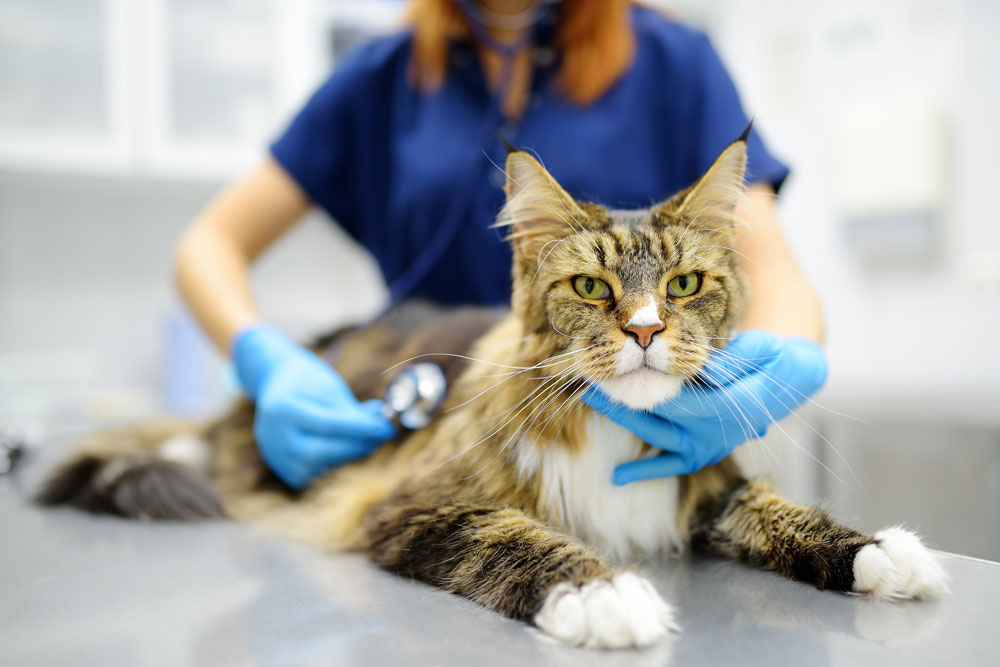Understanding Feline Kidney Disease: Early Signs and Long-Term Care at Driftwood Animal Hospital
What is Feline Kidney Disease?
In cats, as in humans, the kidneys are essential for maintaining overall health. They regulate blood pressure, produce hormones, filter waste from the blood, and maintain a balance of electrolytes and fluids. When these functions are compromised, it can significantly affect your cat’s health. Chronic Kidney Disease (CKD) is common in felines, especially older cats, and involves the gradual loss of kidney function over time.
The progression of CKD in cats can be subtle and gradual, often going unnoticed until the disease has advanced significantly. In the early stages, you might observe symptoms such as increased thirst and urination, often mistaken for normal aging. Without intervention, the disease can progress to more severe stages, leading to toxin buildup that causes nausea, vomiting, and loss of appetite.
Recognizing the Early Signs of Kidney Disease in Cats
Early detection of kidney disease can significantly enhance the management and comfort of your cat. Key symptoms to watch for include:
- Increased thirst and urination: Often the earliest sign, resulting from the kidneys’ reduced ability to conserve water.
- Weight loss: As kidney function declines, nutrient absorption can be impaired, leading to weight loss.
- Lethargy: Indicative of a cat not feeling well, often due to toxin buildup from reduced kidney function.
These symptoms may indicate that the kidneys are less effective at concentrating urine and removing waste. Monitoring your cat for these signs can lead to earlier diagnosis and treatment, which can substantially impact their quality of life.
An emergency situation might include sudden collapse, severe vomiting, or refusal to eat or drink, necessitating immediate veterinary attention.
For more information on this condition, visit the Chronic Kidney Disease in Cats – Cornell Feline Health Center.
Diagnosing Kidney Disease: How We Help at Driftwood Animal Hospital
At Driftwood Animal Hospital, we use a comprehensive approach to diagnose kidney disease in cats, including:
- Blood tests to check for elevated waste products like creatinine and urea, indicators of reduced kidney filtration.
- Urine analysis to evaluate kidney function and detect possible infections. A low specific gravity indicates the kidneys’ inability to concentrate urine.
- Ultrasound to visualize the structure and health of the kidneys, identifying abnormalities such as cysts or stones.
Early detection is crucial for effective management of kidney disease. Without timely diagnosis, CKD can lead to severe dehydration, anemia, and eventually, a life-threatening condition called uremia, where waste accumulates to toxic levels in the bloodstream.
Learn more about our diagnostic services on Our Services at Driftwood Animal Hospital.
Long-Term Management Strategies for Feline Kidney Disease
Managing CKD involves several strategies aimed at slowing the disease’s progression and maintaining your cat’s quality of life:
- Diet modifications: Prescription renal diets are designed to reduce the kidney workload, often lower in protein, phosphorus, and sodium, and enriched with omega-3 fatty acids.
- Hydration therapy: Encouraging drinking, providing wet foods, or administering subcutaneous fluids to prevent dehydration and help flush toxins from the body.
- Medications: To control symptoms and secondary conditions like hypertension or protein loss in urine, which can further damage kidney tissues if unchecked.
Routine veterinary visits are crucial for adjusting treatment plans as the disease progresses. Regular monitoring of blood pressure, blood tests, and urine analysis help tailor the care to your cat’s evolving needs.
For more on living with a pet diagnosed with CKD, visit Chronic Kidney Disease: Living with Your Pet and the Diagnosis – MSU VDL.
Supportive Home Care Tips for Cats with Kidney Disease
Effective home care is vital in managing feline kidney disease. Here are some tips:
- Feeding: Offer appetizing food that meets nutritional needs. Cats with CKD often have reduced appetites, so small, frequent meals or warming food to enhance aroma can help.
- Hydration: Keep fresh water available at all times and consider adding more wet food to their diet. A pet water fountain can also encourage drinking.
- Comfort: Provide a warm, quiet place for resting, away from household noise and stress, which can exacerbate symptoms. For tips on maintaining a suitable environment for your cat, read our article on Happy Cat Month: Encouraging Contentment in Your Feline Friend.
Monitoring your cat’s condition and making necessary adjustments is vital. Regularly check their weight, appetite, and energy levels, and promptly report any changes to your veterinarian.

FAQs About Feline Kidney Disease
We understand you have questions. Here are some FAQs:
- What is the life expectancy for a cat with CKD?
While CKD is a progressive disease, many cats can live for several years with proper management and care. - How often should my cat with kidney disease see a vet?
Typically, every 3-6 months for routine monitoring, but more frequently if the condition worsens or new symptoms appear. - What should I feed my cat with kidney disease?
A veterinarian-recommended renal diet that supports kidney health, reduces phosphorus, and contains high-quality protein.
Contact Driftwood Animal Hospital for Kidney Disease Concerns
If your cat is showing signs of kidney disease or needs a regular check-up, don’t hesitate to reach out. Our team is here to provide guidance, support, and cutting-edge care tailored to your pet’s needs. When you’re ready to schedule your appointment, please visit our Request an Appointment.








Leave A Comment